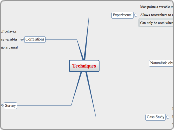Techniques
Experimental
Manipulate a variable to to see if it produces a change on a second variable
Allows researchers to detect cause-and-effect relationships.
Can only be used when it is practical and ethical for the researcher to manipulate the antecedent conditions.
Naturalistic observation
Researcher very carefully observes and records some behavior or phenomenon
Allows researchers to observe behavior in the setting in which it normally occurs rather than the artificial and limited setting of the laboratory
Without the controlled conditions of the laboratory, conclusions about cause-and-effect relationships cannot be drawn,behavior can only be described, not explained.
Case Study
Involves an in-depth descriptive record, kept by an outside observer, of an individual or group of individuals
Useful when researchers want to get a detailed contextual view of an individual's life or of a particular phenomena
Without the controlled conditions of the laboratory, conclusions about cause-and-effect relationships cannot be drawn. Behavior can only be described, not explained.
Correlations
Designed to determine the degree and direction of relationship between two or more variables or measures of behavior.
Can be used to determine if there is a relationship between two variables without having to directly manipulate those variables
It does not tell researchers whether or not the relationship is causal
Survey
Does not involve direct observation by a researcher,rather inferences about behavior are made from data collected via interviews or questionnaires
Useful when researchers are interested in collecting data on aspects of behavior that are difficult to observe directly
It relies on a self-report method of data collection
